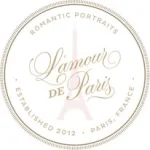(Updated July 2019)
Unfortunately, banking abroad can be a huge hidden cost of traveling. Between ATM fees, currency exchange rates, and international transaction fees, your trip can inflate by quite a bit if you don’t plan ahead. The last thing you want is to return home from an amazing trip only to check your account balance and realize that you spent way more than you thought!
BEFORE YOUR TRIP
As with most travel-related subjects, the best way to save money is to plan ahead. However you have to plan smart! One of the biggest mistakes I see travelers making (and a mistake I made myself for years) is loading up on cash at home before leaving, then exchanging that huge wad of money for Euro once they arrive in Europe. That is literally the worst possible way to get Euros, as the currency exchange kiosks have not only the worst exchange rates but also the highest fees. In general, I don’t recommend traveling with a large stash of US Dollars (or whatever your home currency is). Once you arrive at your destination they will be useless to you and expensive to get rid of.
A month or two before leaving on your trip, schedule an appointment at your local bank branch (if you use multiple banks, schedule meetings with each one) and talk to them about the following items:
1. Purchasing currency. Most banks will allow customers to order foreign currency such as Pounds or Euro and have it shipped directly to their home (large amounts are shipped to your local bank for pickup) for no additional fee. The rates they give you aren’t great, but they’re reasonable, and far better than what you’ll find at a currency exchange. Some even let you choose the denominations you want, so you can stock up on useful 1, 2, and 5 Euro pieces. Check with your all the banks you do business with to compare rates and fees before ordering. While I don’t advocate traveling with huge amounts of cash, this is a good and inexpensive way to make sure you have enough money to get around on your first day or two.
2. ATM partnerships in Europe. Many US banks have partnerships with European banks that allow their customers to use ATMs without fees. Bank of America in particular is part of the Global ATM Alliance, which means Bank of America cards incur no fees at member bank ATMs, which include BNP Paribas in France and Belgium, Barclays in the UK, BNL in Italy, Deutsche Bank in Germany, and several others throughout the world.
3. International transaction rates. It’s very important that you’re fully aware of all international transaction rates for all of your debit and credit cards. Most banks charge 1-3%, but some charge as much as $10 per purchase. If you don’t know your bank’s fees, you could end up with hundreds or even thousands of dollars in surcharges. Make sure to ask about fees for both purchases and withdrawals.
4. Travel-friendly debit and credit cards. Many banks offer a special debit or credit card that is specifically geared towards those who travel often or conduct a lot of banking overseas. Ideally you should look for a European-style chip-and-PIN card with no international transaction fees. I’m a big fan of Bank of America’s Travel Rewards card, which meets those criteria and also allows you to earn points which you can redeem for statement credits. It also has no annual fee, which is a big bonus. Capital One Venture Rewards and Chase Sapphire are both traveler friendly, although they do have annual fees. American Express does offer several travel-friendly chip-and-PIN cards, but AMEX is not widely accepted in Europe, so make sure you have a good alternative card.
5. Travel notifications. Make sure to notify your bank when and where you’ll be traveling so that their fraud department does not place a freeze on your accounts. Also make sure you ask for numbers you can call if you have financial problems abroad. Specifically you want to avoid 800, 888, 866, etc. numbers, which are often blocked for international callers. Most debit and credit cards list a number for international callers on the back, but you should make a note of these somewhere in case your wallet is lost or stolen. Typically you must call into your bank’s Customer Service department to place a travel notification on your account.
In addition to speaking with your own bank, it might help to do some research online for other banks or credit unions that have good offers for travelers. USAA and Charles Schwab both have accounts that are good for international travelers, and I love working with Moneycorp, a UK-based currency exchange. Moneycorp offers some of the most competitive exchange rates in the industry, and they even have an Explorer currency card which you can pre-load with various different currencies and use at any ATM (with no fee) or anywhere VISA is accepted (also with no fee). If you’re traveling through the UK, you can even pre-purchase Euro or Pounds in advance and pick them up at a Moneycorp bureau once you arrive at the airport. This is what I use when traveling and it works great!
Make copies/scans of your credit cards before leaving. If your cards are lost or stolen, it can be useful for both the police and your bank to have copies of your card numbers. This will make it easier to shut down the old cards and replace them with new cards, and in some emergency cases you may still be able to access your funds without the card present. However, make sure you keep these copies or scans in a very secure place, such as your hotel safe.
DURING YOUR TRIP
If you’ve followed my instructions, you should have little to no problems accessing your funds while traveling, and you should be able to minimize or even completely eliminate all transaction fees – Hooray! However, if you haven’t planned ahead or if you find yourself in an emergency situation, here are a few key things to remember:
1. Keep an emergency stash. A friend once told me to treat your credit cards like the President and Vice President – never in the same place at the same time unless it’s totally secure, such as in your hotel room. I always have three credit or debit cards that I can use while traveling, one of which stays in my hotel safe or locked inside my luggage when I am out. That way I have a backup on hand if I need it, but if a pickpocket gets my wallet, I still have a backup card back at my hotel.
2. Avoid currency exchange kiosks, bureaus de change, cambios, and any other place whose sole function is to exchange currency, particularly any located near airports or train stations. These places have very high fees and terrible rates. If you’re desperate for cash, use an ATM instead.
3. When using ATMs, be vigilant. Inspect the machine for card swipers or hidden cameras that thieves may have installed over the ATM’s facade. I always tug on various parts of the machine to see if anything comes loose. Typically thieves attach their devices loosely so that they can grab them and go quickly if the police are nearby, so a firm tug should pull most illegal devices off easily, and make sure to cover the keypad with one hand when you type in your PIN number. Also make sure to keep an eye on anyone standing around nearby. There have been a string of ATM thieves in Paris lately who run up and grab the cash just as it is being ejected, so make sure you pay attention to your surroundings and try not to go to an ATM alone. ATMs in Paris break down often, so try not to wait until you’re desperate for cash to start looking for one.
4. If given the choice to pay in two different currencies, choose the local currency. For example, if you use a US card in France, you may be given the choice between paying in Euro or US Dollars. Choose Euro! The rates that the stores give you are virtually always several points higher than the rate your home bank will give you, and they include a hidden 3% currency conversion fee from VISA/MasterCard. Even if your card has an international transaction fee, you’re generally going to be better off paying that and your bank’s rate versus the rate that the store or restaurant will offer you.
2. Learn the VAT detax rules for the countries you are visiting. In France for example, if you at not an EU resident and you spend 175€ or more in one store, you can get a partial refund (about 20%) of your money back. However, you have to request a VAT detaxe form from the store when making your purchase and you have to have your passport present at the time of purchase. You also have to present the form, your passport, your airline ticket, and the items you purchased at the Customs desk at the airport when you leave. If you’re planning to do a lot of shopping, this can be a major money-saver. If you pay with a credit card, the refund will be placed back directly onto your card, so keep this is mind when choosing payment options.
Hopefully these tips will help you to save time and money when traveling abroad. Remember – PLAN AHEAD! If you have any specific questions about banking in Europe, if you have some advice you’d like to offer to fellow travelers, or if you have a crazy story about your banking experience while traveling abroad, leave your remarks in the comments below!














karenI’m so excited to see how you mixed and matched key pieces for light travel! I LOVE how you actually SHOWED all the different combinations- for some of us that doesn’t come easy!!! And they all look so chic!!!
I have a question- we are visiting London/Paris the first weeks of October. I know it is getting colder- would you suggest any different or additional pieces to your outfits knowing that it is getting colder but not winter yet?
Thank you!